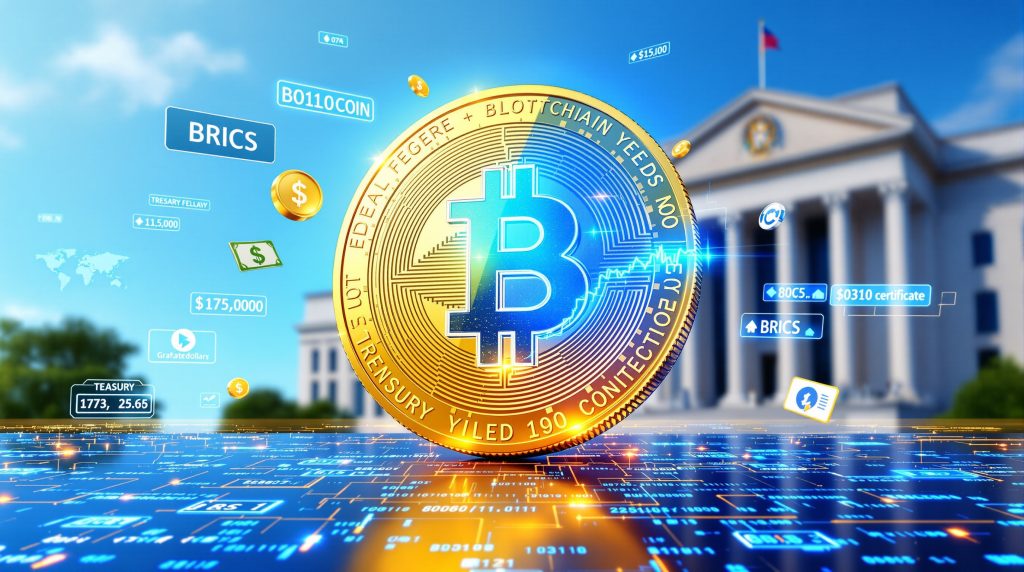What is the Genius Act and Why Was It Created?
The Genius Act Explained
The Genius Act, formally known as the Generating Enhanced National Investment in Useful Stablecoin Act, establishes a federal framework to regulate payment stablecoins in the United States. Designed to bring clarity to a rapidly growing sector, the legislation requires that stablecoins—digital tokens pegged to the U.S. dollar—are fully backed 1:1, primarily through short-term Treasury securities. This directly impacts stablecoin issuers, custodians, and banks within the ecosystem, ensuring that digital dollars circulating on blockchains are as secure (on paper) as currency held in traditional deposits.
Key Requirements Under the Genius Act:
- Stablecoin issuers must hold U.S. dollar-denominated assets, with a preference for Treasury bills of 28 days or less.
- All stablecoin redemptions must be honored at par value, providing a clear exit for holders.
- Regulatory agencies are granted oversight to monitor prudential risks and compliance.
This structure ensures that stablecoins can play a reliable role in payments and settlements, but also establishes strict regulatory requirements for market participants.
Motivations Behind the Legislation
Driven by a convergence of macroeconomic and financial stability concerns, the Genius Act and stable coins address core issues in U.S. capital markets and the digital asset sector. According to Andy Shechman, "This was created to find synthetic demand for the US Treasury, which is lacking organic demand." Several motivations stand out:
- Treasury Market Support: By mandating that stablecoins are backed by U.S. Treasuries, the act creates automatic, synthetic demand for government debt at a critical time for federal financing.
- Regulatory Clarity: After years of regulatory limbo, the act delivers clear guidance for an industry facing mounting scrutiny from enforcement agencies.
- Banking Sector Profits: As Alistair Mloud highlighted, banks are attracted by the opportunity to "pay zero interest" on stablecoin balances while earning "4.3%" on short-term Treasury holdings.
- Centralized Control: The act brings stablecoins into the regulatory perimeter, curbing the sector's tradition of decentralized, unregulated experimentation.
How Stablecoins Function Under the Act
The operational model defined by the Genius Act can be outlined as follows:
- Customer deposits U.S. dollars with a stablecoin issuer.
- Issuer invests these funds almost exclusively in very short-term U.S. Treasury bills (often 28 days or less).
- Issuer receives an annualized yield—recent figures place this at roughly **4.3%**—while paying 0% to stablecoin holders.
- The issuer profits by capturing the entire yield spread, minus operational and regulatory compliance costs.
This creates a low-risk, highly profitable model for large financial institutions and banks, while theoretically improving the safety and stability of dollar-backed digital assets.
Is the Genius Act Positive or Negative for Financial Regulation?
Potential Benefits
The Genius Act brings both innovation and security to financial regulation and the payment landscape:
- Regulatory certainty: For the first time, issuers and users have clear rules regarding the operation and safety of stablecoins.
- Consumer protections: Redemption rights at par value are enshrined, reducing risks for retail and institutional holders.
- Treasury demand stabilization: Automatic buying of Treasury bills by issuers helps absorb U.S. debt.
- Federal oversight: Greater transparency and risk management, previously absent in decentralized stablecoin projects.
Potential Concerns
Despite its regulatory advantages, critics argue the Genius Act may introduce new vulnerabilities:
- Artificial Treasury demand: "When all of these are backed by US treasuries, what you are seeing in essence is a massive synthetic demand for US treasuries," notes Andy Shechman. This could mask deeper fiscal problems.
- Currency devaluation questions: Is a "stable" coin truly stable if its backing currency weakens rapidly?
- Expanding synthetic instruments: The act may lead to a proliferation of synthetic dollar assets outside the direct reach of central banks.
- Systemic risk in financial stress: If Treasury yields fall or investor confidence wavers, stablecoin redemptions could pressure both issuers and broader markets.
Banking Sector Implications
The Genius Act is seen as a windfall for banks:
- Issue stablecoins with zero interest obligation.
- Invest proceeds in Treasury bills yielding over 4%, capturing nearly the entire spread risk-free.
- Reduce risk-weighted assets compared to commercial lending or other exposures.
As Alistair Mloud put it, banks "kind of like this stuff and at the moment are basically frightened of risk," making stablecoins an appealing, low-risk business line.
How Do Stablecoins Connect to Broader Financial Market Trends?
Physical Precious Metals Market Dynamics
Recent anomalies in precious metals markets may signal broader financial fragility connected to digital asset and payment market trends, including the Genius Act and stable coins ecosystem.
Notable Developments:
- Unprecedented Gold Delivery at COMEX: "Over 2 million ounces of gold post for delivery" in the first three days of a single contract, with "20,100 contracts," or "$7 billion worth of gold," demanding delivery—a statistic virtually unheard of in previous decades.
- Net Outflows from Precious Metals Vaults: In a five-day period, "1,890,316 ounces withdrawn" versus only "1,721,192 ounces…received," further straining physical reserves.
- London Platinum Market Stress: Daily trading volumes near 3 million ounces but "virtually no physical platinum available for delivery" according to industry insiders. Bruce Ikemizu observed, "the market may already be broken…London appears to have virtually no physical platinum available for delivery."
- London Bullion Market Delays: Despite a T+1 settlement system, notable "8-week delays for physical metal deliveries" have been reported at the Bank of England—a clear sign of evolving liquidity pressures.
These movements reflect not only higher demand for physical assets but also a disturbing divergence between the volume of paper metal contracts and available supplies—mirroring tensions visible in the stablecoin sector.
Potential Connections to Monetary Policy
These precious metals trends tie into monetary and fiscal concerns in several ways:
- Trust Crisis: Widespread skepticism toward fiat currencies and financial intermediaries is driving parallel demand for both stablecoins and physical precious metals.
- Liquidity Squeeze: Market players' race for physical delivery hints at potential liquidity shortfalls—an echo of the rapid stablecoin adoption and the Genius Act's regulatory intervention.
- Signs of Systemic Stress: The breakdown in traditional settlement timelines and delivery guarantees suggests foundational shifts in how assets are trusted, traded, and held.
Could Gold Revaluation Be on the Horizon?
The Federal Reserve's Research Note
In a pivotal move, the Federal Reserve published "Official Reserve Revaluation: The International Experience," outlining how several nations have used central bank gold moves to bolster balance sheets. While not an explicit recommendation, this research arrives amid swelling speculation about gold's future role in the U.S. monetary system.
Two Perspectives on Gold Revaluation
The Case Against Imminent Revaluation
- An independent audit of the U.S.'s 8,130-ton gold reserve—a step not taken in decades—would be a likely prerequisite.
- As Alistair Mloud points out, current policymakers may not fully appreciate or understand gold's historical role in stabilizing currency.
- The transition to a gold-based or gold-backed system would require a dramatic shift in monetary policy, likely prompted by major economic distress.
- Such a move could disproportionately benefit global gold holders like Russia or China, heightening US-China trade impact.
The Case for Potential Revaluation
- Every $4,000 increase in the gold price yields the Treasury "1 trillion free and clear" on its balance sheet, according to Andy Shechman.
- With $28 trillion in Treasury debt maturing in three years, gold revaluation could provide crucial fiscal breathing room.
- Gold revaluation could underpin new, zero-interest, long-dated bonds, and dovetail with global trends toward official sector gold accumulation.
- Prominent voices, including Michael Hartnett and Francisco Blanch, have called gold revaluation an attractive tool to reduce debt burdens and restore faith in central bank credibility.
Potential Implementation Mechanism
A modern gold revaluation, if implemented, might proceed as follows:
- Conduct an independent gold reserve audit.
- Officially declare a substantial upward revaluation (estimates range between $10,000 and $24,000 per ounce).
- Allocate revaluation gains to the Treasury via a special "gold revaluation account."
- Allow for issuance of long-duration, gold-backed Treasury bonds.
- Accept some degree of dollar devaluation to boost export competitiveness and drive manufacturing reshoring.
Historical Context Table: Gold Revaluation in the U.S.
| Year | Gold Price (per oz) | Action | Market Impact |
|---|---|---|---|
| 1933 | $20.67 | Roosevelt revaluation | Dollar devalued, gold price reset to $35/oz |
| 1971-73 | $35 – $42.22 | Nixon ends gold peg | Floating exchange rates, sharp gold repricing |
| 2025? | $10,000–$24,000 | Speculated revaluation | Potential Treasury windfall, global market disruption |
Disclaimer: Gold revaluation remains a speculative scenario and would require significant policy and operational steps. This overview is for educational purposes, not as financial advice.
The Broader Context: De-Dollarization Trends
BRICS Payment Systems Development
An accelerating push away from dollar-dominance is underway as BRICS countries develop alternative regional payment systems.
- The new BRICS Bridge links "11 Asian and 5 Middle Eastern countries, representing 38% of global GDP" and boasts execution of settlements "in 7 seconds" with a reported "98% reduction in fees."
- Settlement infrastructure operates outside the western-dominated SWIFT network.
- Integration with the Belt and Road Initiative could soon enable as much as 75% of the world's population to transact outside the dollar system.
Table: BRICS Bridge Key Features
| Feature | Statistic / Capability |
|---|---|
| Countries Included | 16+ (Asia & Middle East) |
| Share of Global GDP | 38% |
| Settlement Time | 7 seconds |
| Fee Reduction | 98% vs traditional systems |
| Potential Reach | Up to 75% of global population |
Changing Trade Patterns
- Southeast Asian nations are now "China's largest trading partner bloc," handling three times more trade than the U.S. with China.
- A growing number of countries are shifting to non-dollar settlement for bilateral and regional commerce.
U.S. Policy Response
Amid these changes, the U.S. response includes:
- Introduction of tariffs affecting even traditional allies, signaling a possible shift from protecting reserve currency status toward industrial reshoring.
- Open discussions, often cited in policy circles, about whether "the exorbitant privilege" of the dollar should remain a primary objective, given the evolving global landscape.
What This Means for Investors and the Financial System
Potential Market Implications
The intersection of the Genius Act and stable coins with precious metals market anomalies and shifting global payment rails signals potential turbulence and opportunity for investors:
- The divide between physical and paper assets is widening as delivery claims are increasingly tested.
- Rapid, unusual gold and silver delivery demands suggest underlying cracks in the financial plumbing.
- International payment systems bypassing the dollar could accelerate global de-dollarization, changing the investment calculus for U.S. and foreign asset classes.
- "We've become a net importer of gold since November. That's something that we haven't ever been in my 35-year career," reports Andy Shechman—a sign of shifting market psychology and capital flows.
Warning Signs to Monitor
- Persistent spikes in COMEX and LBMA contract deliveries versus historical averages.
- Mounting delays in actual physical metal deliveries from vaults previously considered highly liquid.
- Surging adoption and implementation of non-dollar settlement mechanisms in global trade.
- Regulatory innovations or legislative changes targeting the structure and backing of global money systems.
Preparation Strategies
Investors and asset managers should consider the following actions:
- Understand and verify the difference between physical ownership and paper or digital claims, especially in turbulent markets.
- Track stablecoin issuer compliance and the specific assets backing circulating tokens.
- Prepare for potential market dislocations by diversifying exposure to both traditional and alternative assets, such as precious metals.
- Monitor for leading indicators of systemic stress, such as widening yield spreads, failed settlements, or unprecedented changes in vault inventory patterns.
Recent gold prices analysis shows why many investors are turning to gold investment strategies amid economic uncertainty. Furthermore, the persistence of record-high gold prices reflects growing concerns about both financial stability and currency devaluation risks.
FAQ About the Genius Act and Stablecoins
What exactly is a stablecoin?
A stablecoin is a blockchain-based digital asset designed to maintain a consistent value relative to a reference asset, most commonly a fiat currency like the U.S. dollar. Under the Genius Act, stablecoins must be fully backed by highly liquid, short-term U.S. Treasury securities at a 1:1 basis.
How do stablecoins differ from cryptocurrencies like Bitcoin?
While major cryptocurrencies like Bitcoin have market-driven prices subject to volatility, stablecoins are engineered for price stability. Their rules, technical infrastructure, and regulatory obligations make them distinct—combining the benefits of blockchain infrastructure with the predictability of established currencies.
Who benefits most from the Genius Act?
Banks and large financial institutions are the primary beneficiaries of the Genius Act. They can issue stablecoins without paying interest to holders while capturing yields from safe government securities. Users benefit primarily from enhanced regulatory protections, but forfeit potential returns on their crypto savings.
Could stablecoins play a role in de-dollarization?
In the short run, stablecoins that use U.S. dollar and Treasury backing actually strengthen the dollar's role in the global financial system. However, growth in non-dollar-backed coins and cross-border settlement systems could contribute to de-dollarization over time, redefining the world's monetary order.
Further Exploration
If you're interested in deepening your understanding of the Genius Act and stable coins, and how they intersect with precious metals, monetary policy, and international trade, consider accessing expert-led discussions from VRIC Media. These panels feature thought leaders from the worlds of finance, economics, and metals markets—offering insights rarely found in conventional media coverage.
Ready to Gain a Market Edge in Mineral Investment?
Discover breakthrough ASX mining opportunities instantly with Discovery Alert's proprietary Discovery IQ model, which identifies significant mineral discoveries the moment they're announced. Explore why major mineral discoveries can lead to substantial returns by visiting Discovery Alert's dedicated discoveries page and start your 30-day free trial today.




